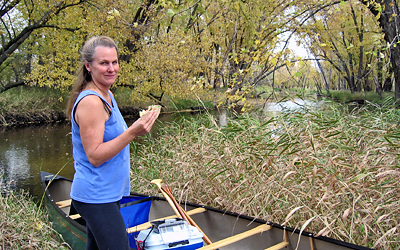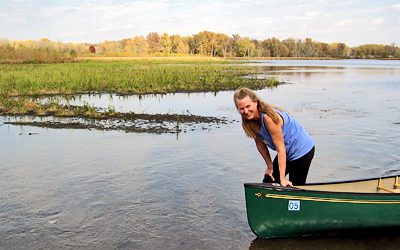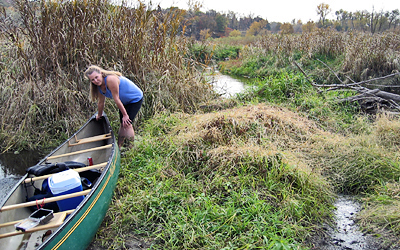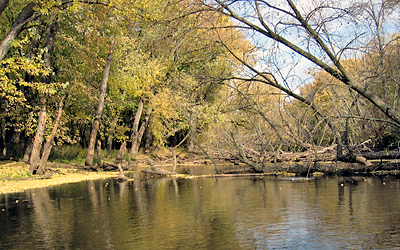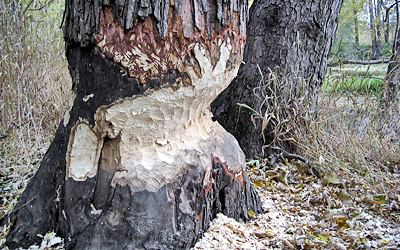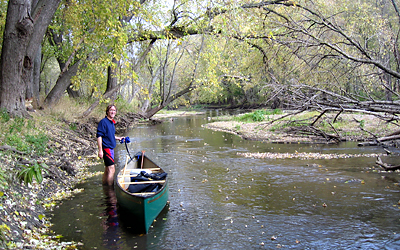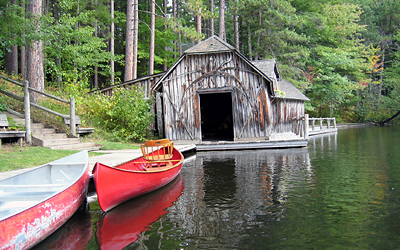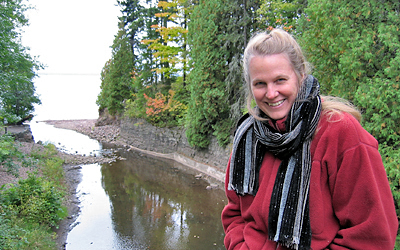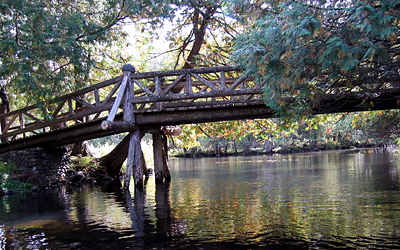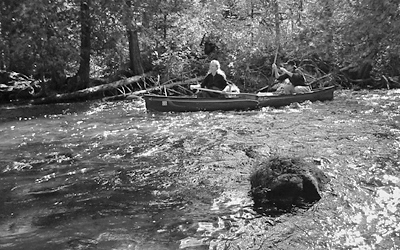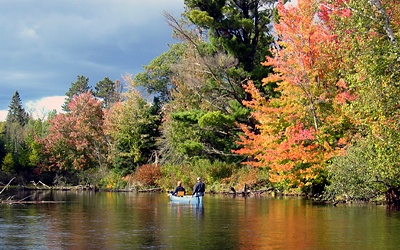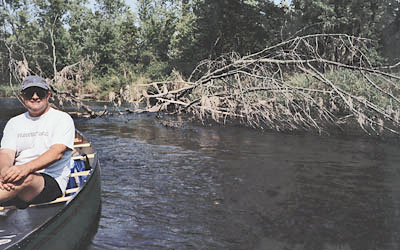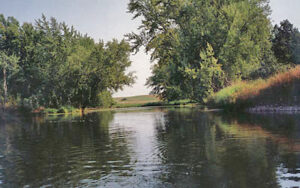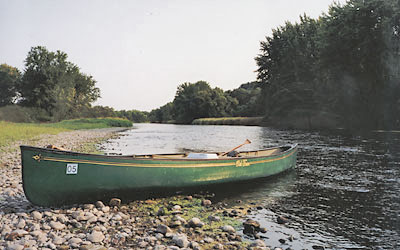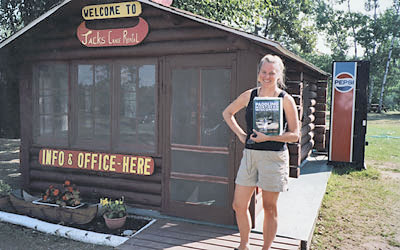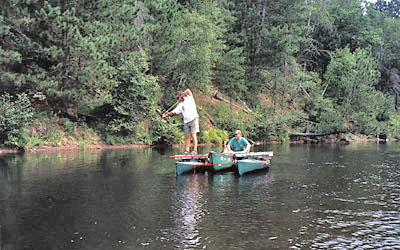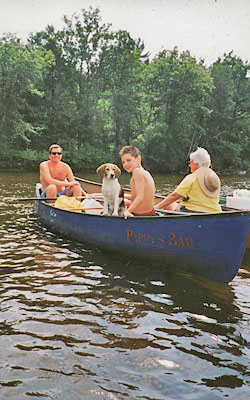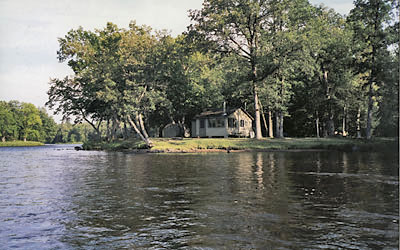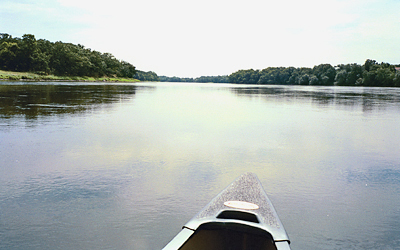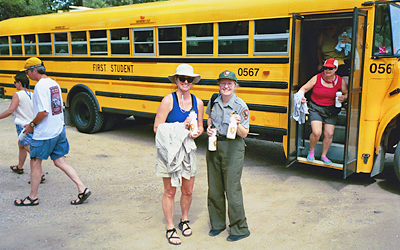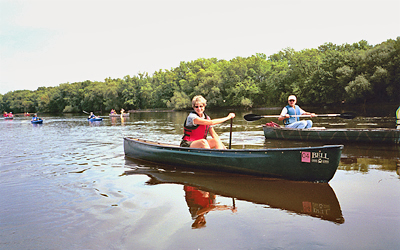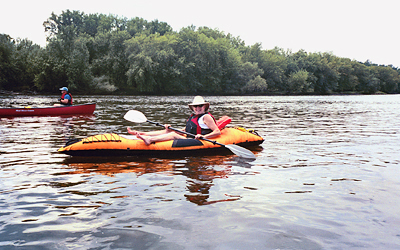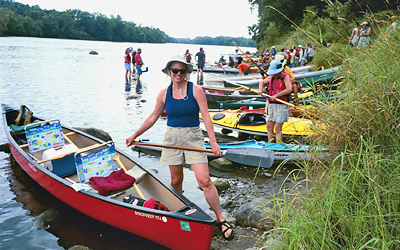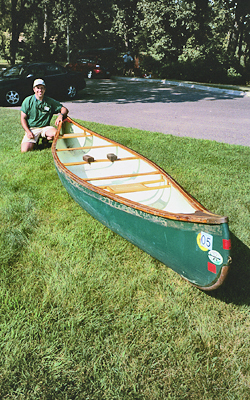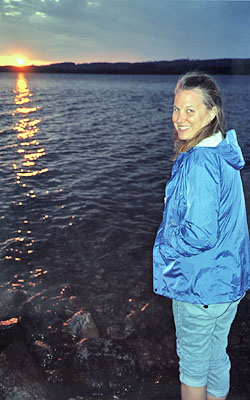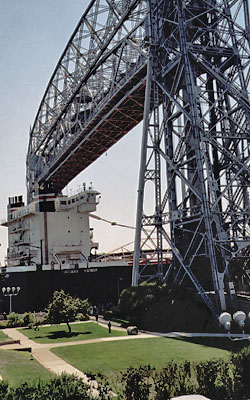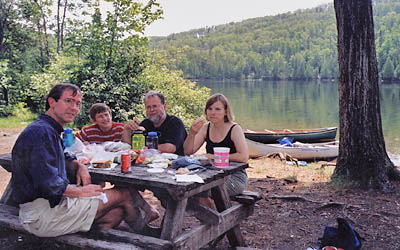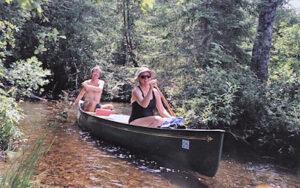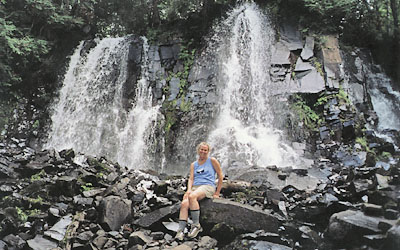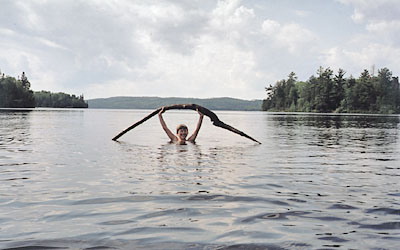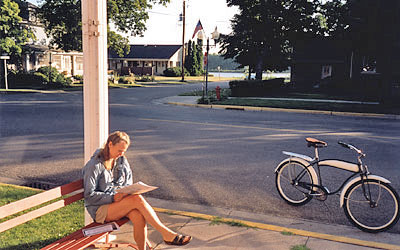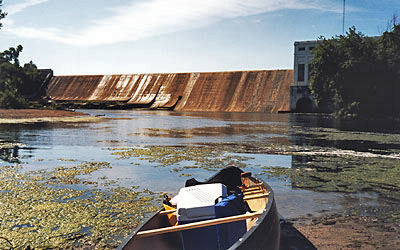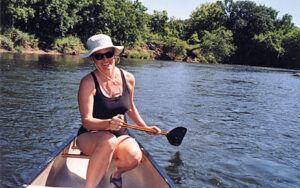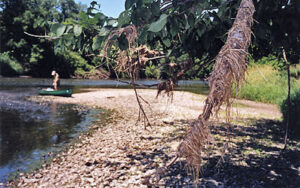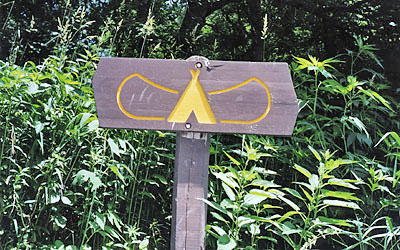May 15, 2004—Most of the rivers that I have paddled would be called “flat water” rivers. Once I had mentioned that I would like to learn how to be more comfortable in the face of rocky turns, unexpected sweepers, and quick water — that I would like to learn to enjoy a lush rock garden instead of dreading it!
Well, be careful what you ask for! My family gave me a two day Whitewater Training session with the Wild Institute (thewildinstitute.com) for Christmas! My heart sank when I opened the envelope — the certificate promised two days on a northern Wisconsin River in the middle of May. The ice would barely be off the river! My fourth generation Florida blood was already shaking at the thought.
May did finally arrive and even though the weather promised to be below freezing for the first night of camping, I drove north to find the DNR campground beside the beautiful Bois Brule (see river #14). I found the group and we set up our tents as a small village, all circled around the cook’s table. The Wild Institute is an organization led by Chris Heeter, a tall, clear-eyed woman who teaches women to manage rivers in the summers and to run dog sleds in the winter. I joined several other students and the weekend began with a fish dinner followed by a warm fire. That night the temperature dropped to 25 degrees and by morning I had layered every single piece of clothing I had brought along, including my deep winter down coat. Were we really going to go out on the water in this?
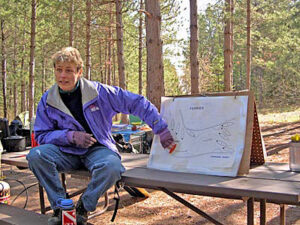
Bundled up in our winter gear we sat in a circle as Chris and Marti gave us ground school lessons. Draw strokes, cross draw strokes, ferrying, and eddying out were all outlined and demonstrated. After the lecture we headed to the water where carrying the six canoes and gear helped warm us all up. The sky cleared a little and a weak sun was gratefully praised. I even peeled off my wet suit and by the time we set off I thought that we could manage this as long as we were on top of the water, not in it.
We spent the entire day navigating the river, learning the bow stokes that help steer a canoe in quick water. We all successfully accomplished the rapids at Little
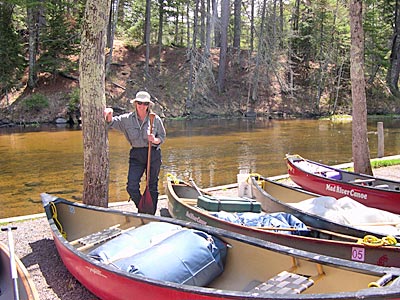
Joe (the same rapids I had held my breath on during our first navigation of the river.) It was thrilling to feel a growing confidence. That night we ate a tremendous meal by the fire and turned in early. The next day a steady rain welcomed us but by now I knew that the Wild Institute does not consider inclement weather to be a deterrent to paddling. This time we headed north to a more active, rocky part of the river and ground school instruction had to be delivered loudly over the churning water and the falling rain.
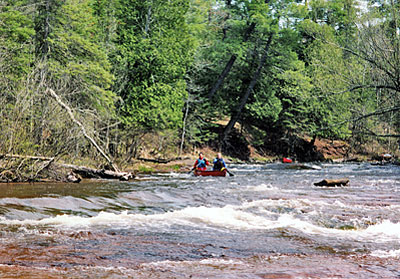
We students were to take on the stern paddling position (steering from the back) today. Chris demonstrated the right and left paddle responses, and eddying directions from the back. Everything was suddenly switched. We entered the water and somehow the stress of the rapid new information, the fast water peppered with rocks, and my own dyslexia confused me so much that a mild panic overtook me. Suddenly left was right and right was left and I could not remember ANYTHING I had just learned. With great patience the instructors helped me get a grip on things and we practiced over and over until I could understand what stroke would move the canoe in each direction. This was a revelatory moment for me — I live in a world where I am competent at most things I do, and suddenly I was incapable of the simplest direction, but the river’s relentless rushing said: you must act NOW! Patience, slowing down, repetition, kindness around me — all these steps helped me prepare for the coming “Ledges,” a series of Class II drops that were going to test our newly acquired skills later in the afternoon.
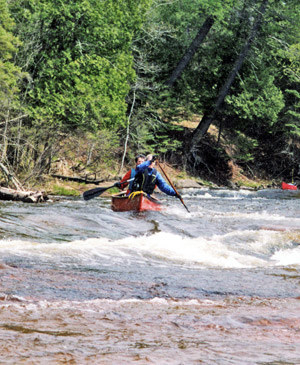
As a group we all walked the banks of the Ledges, scouting the drops, listening intently to our instructors describe the through lines we hoped to paddle for each churning ledge. It was scary to look at — I did not think I could manage it, but I did not see how I could get out of it. I was resigned: I’ll just do the best I can.
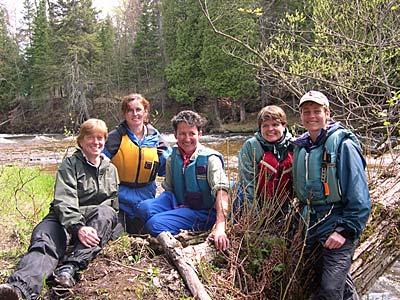
I am happy to report that my canoeing partner, Sherry, and I made it over the drops with some grace. It all happened very fast, and my body reacted quickly enough to work with my excellent stern paddler. Throughout all this I watched Chris manage a solo canoe down the same rushing rapids, slowly, carefully, picking her entrances and exits, working the churning water to her speed instead of vice versa. It was an inspiration to watch and enough to make me say…Maybe I’ll learn that, next…


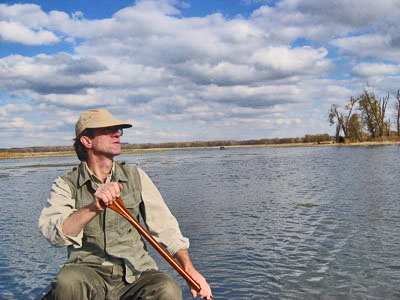

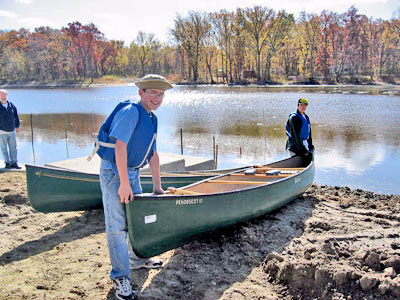
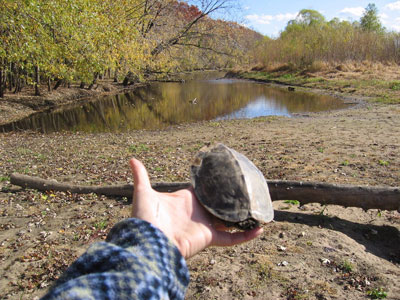


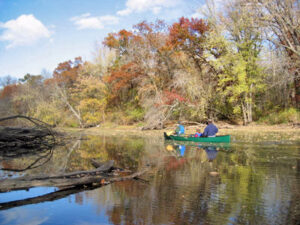
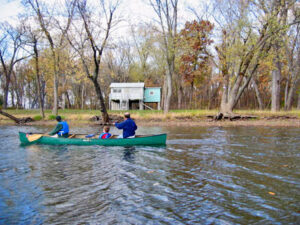 On the last stretch we paddled past more of the odd houses bordering the edge of the slough. Every cabin was perched on top of six to eight foot pilings, safe from the wrath of a rising Mississippi. The wind was chilly when we pulled into the boat slip. We were covered with mud and getting cold as we tied the boats to the car racks. Homer writes of “the rosy fingered dawn” but as we turned out on the road we found the northern sky filled with “black-clawed winter.” Like the arching reach of Mordor, we could actually see winter coming for us with its dark, cold sky. The day that began in gold edged blue ended in shivering black. But somehow we had slipped our canoes through the very last hours of fall and we were nothing but gloriously happy and tired.
On the last stretch we paddled past more of the odd houses bordering the edge of the slough. Every cabin was perched on top of six to eight foot pilings, safe from the wrath of a rising Mississippi. The wind was chilly when we pulled into the boat slip. We were covered with mud and getting cold as we tied the boats to the car racks. Homer writes of “the rosy fingered dawn” but as we turned out on the road we found the northern sky filled with “black-clawed winter.” Like the arching reach of Mordor, we could actually see winter coming for us with its dark, cold sky. The day that began in gold edged blue ended in shivering black. But somehow we had slipped our canoes through the very last hours of fall and we were nothing but gloriously happy and tired.